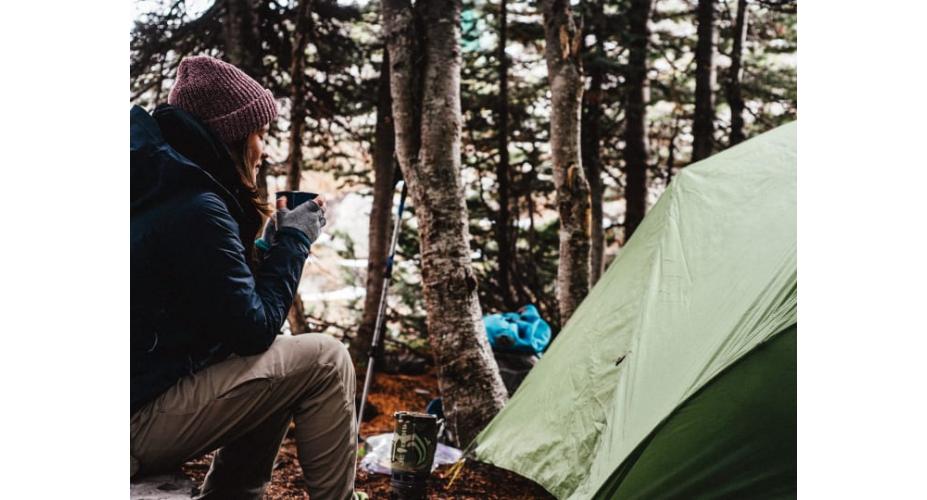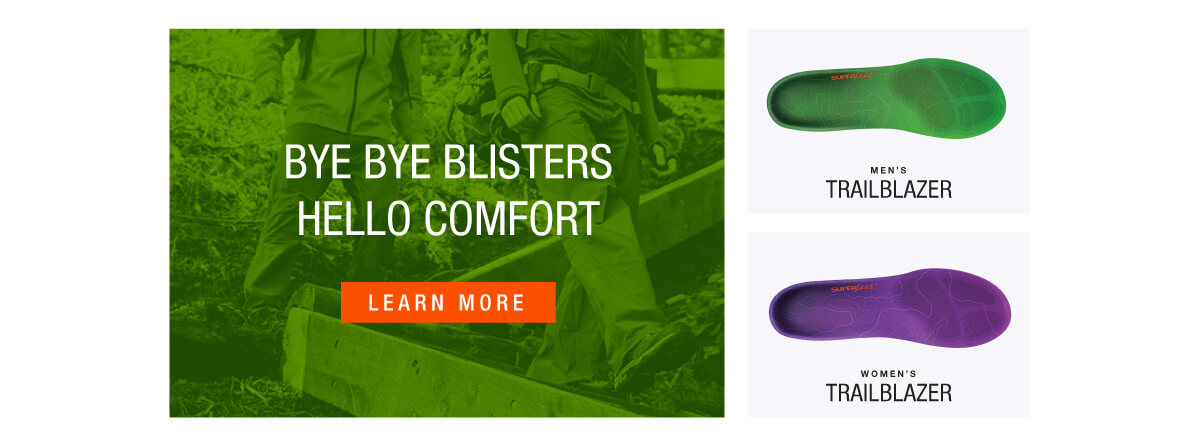
If you typically put away your camping gear during the winter and leave it stowed until spring, you're missing out on some great days in the outdoors. During the winter, the bare trees reveal mountain views you just can't get in the warmer months, and the cold conditions drive off the masses, providing a greater sense of solitude. Plus, the dry, cool air creates ideal conditions for stunning sunsets.
But, winter camping also poses special challenges. During the winter, the temperatures can fall below freezing, even down to single digits, and you need the proper knowledge, gear, and clothing to stay warm, dry, and comfortable. If you don't pack wisely in summer, you might be uncomfortable, but it's usually no big deal. But, in the winter, you risk illness, injury, or a really miserable outing if you're not prepared.
To help you fill your winter with safe, enjoyable, and memorable adventures, we've put together a list of 11 important camping tips.
1. Check the Weather
As with all of your outdoor adventures, you should do your homework and find out the weather conditions you'll likely encounter while camping. You can check the forecast with local media or the National Weather Service. Remember that conditions can change quickly, so be prepared with all of the clothing and supplies you'll need for a worst-case scenario.
Also, keep in mind that the weather can affect road conditions, and you need to make sure that you'll be able to reach your destination and return safely. Whenever possible, check the websites of parks or other recreation areas or contact park rangers or other experts to get the latest road and trail conditions. Rangers and other official personnel can also offer suggestions on the best campsites to use in winter.
2. Choose the Right Campsite
Whether you're backpacking or tent camping, the right campsite can be the difference between an enjoyable, cozy winter outing or one that's miserably cold. Look for a campsite that has trees or rocks that can partially block the wind, but make sure the trees are sturdy and that they're not dead, dying, or rotting. The same goes with branches. Don't pitch camp under dodgy looking limbs that could come crashing down.
3. Dress in Layers
The trick to staying comfortable outdoors during winter is to remain warm and dry. To do this, you need to regulate your body temperature so that you're never too hot and sweaty, and never so cold that you're core body temperature drops. The most efficient way to regulate your temperature is to dress in layers so that you can quickly add or remove clothing.
Basically, there are three layers you should carry:
-
Baselayer: These clothes sit against your skin and move moisture away from your body to keep you dry. They should be made of synthetic materials or wool and include little or no cotton, which holds water and robs valuable heat from your body. Mid-weight long underwear is a good choice for moderately cold winters. When temps start heading below freezing, you might consider heavier baselayers.
-
Middle layer: This is your insulating layer that will retain your body heat, but also allow some air to circulate to prevent overheating. This could be a sweater or jacket made with synthetic and/or wool materials. (This would include most puffy jackets.)
-
Outer layer: This is also known as the shell layer and includes jackets and coats that offer some protection from wind and moisture. If there's a chance you'll encounter rain or heavy snow, be sure to pack a waterproof shell.
4. Dress for Sleeping Success
It's not always comfortable to change clothes while hiking or camping in the cold of winter, but you should change into dry, clean clothes before you go to sleep. If your clothes are dry you'll stay warmer at night, and dirty clothes typically hold dirt and oil from skin, which reduces their insulating properties.
5. Pack the Proper Tent
 Choose a tent that has enough room to allow you to store gear inside it. Jordan Heinrichs
Choose a tent that has enough room to allow you to store gear inside it. Jordan Heinrichs
Choose either a three- or four-season tent for winter camping. A three-season tent works for most mild winter conditions, and it will allow more ventilation to reduce the amount of condensation that can form inside the tent. During the winter, be sure to open the tent's vents and expose mesh panels to reduce condensation.
Four-season tents are designed to withstand high winds and heavy rain or snow. To reduce drafts, they typically have little mesh for ventilation and a rainfly that extends almost to the ground. Plus, the poles are very sturdy so they can stand up to the wind. The downside is that four-season tents can build up lots of condensation in the more humid areas of the US.
When you choose a tent, be sure that it has room for an extra person—if two people will be sleeping in the tent, get one designed for three people. This way you'll have space to place gear inside the tent or the vestibule to keep it out of the elements.
6. Choose the Right Sleeping Bag
Sleeping bag temperature ratings aren't supremely accurate, because many factors affect your body temperature at night. Some people tend to sleep hot, while others tend to be cold. Plus, your warmth is affected by the number of calories you consume before sleeping. So, it's a good idea to choose a sleeping bag that has a temperature rating 10 degrees lower than the coldest temperature you expect. You can also use a sleeping bag liner to add five to 25 degrees of warmth.
Keep in mind that most bags filled with down will be more lightweight and efficient at keeping you warm. However, they lose their thermal effectiveness when wet. A bag with synthetic insulation might weigh more, but it will continue to keep you warm if it gets wet. Also, be aware that some bags have water-resistant down that gives you the best of both worlds.
7. Insulate Yourself from the Ground
Much of your heat loss while camping is from sleeping on the cold ground. If possible, use two pads under your sleeping bag—the bottom pad should be closed-cell foam, while the upper pad should be thin and inflatable. Remember, pads are rated by their "R" value from 1.0 to 8.0, with 8.0 being the best. A good average pad has an R-Value of 4. Also, spread a ground cloth or tarp under your tent to prevent moisture from forming inside.
8. Consume Plenty of Calories
 Pack a stove so you can prepare warm drinks. Kyle Peyton
Pack a stove so you can prepare warm drinks. Kyle Peyton
When planning your meals, make sure they're high in calories, which your body needs to burn to stay warm. Keep your meals simple and easy to make, preferably one-pot meals. When you arrive into a cold campsite tired and hungry, you don't want to mess with anything that's difficult to prepare.
Be sure to drink plenty of water to stay hydrated, which can actually be more of a problem in the cold than in the heat of summer. Also, be sure to bring a stove so that you can make hot water. If someone gets hypothermic you can warm the person's core temperature quickly with hot chocolate or another warm drink.
9. Stay Warm with the Old Hot Water Bottle Trick
An easy way to stay warm at night is to heat water, put it in a plastic bottle, and place it near your feet or between your legs inside your sleeping bag. Make sure it's not too hot and use a plastic bottle instead of metal so that you don't get burned.
10. Don't Run Out of Power
Batteries have a nasty habit of dying in the cold. Alkaline batteries tend to lose power faster than lithium. If your batteries die, try warming them in your hands or in your sleeping bag. That might jumpstart them again.
11. Use These Tricks for a Better Winter Campout
Here are few other tips for winter camping:
-
When you gotta go, go! An empty bladder means your body uses less energy to stay warm.
-
If you like to use a hydration reservoir, make sure the tube has an insulated sleeve or the water in it will freeze. If the hose isn't insulated, leave the reservoir system at home and use water bottles instead.
-
If you do use water bottles, store them standing upside down at night. Water freezes from the top down.
Written by Joe Cuhaj for Matcha in partnership with BCBS of AL and legally licensed through the Matcha publisher network. Please direct all licensing questions to legal@getmatcha.com.


